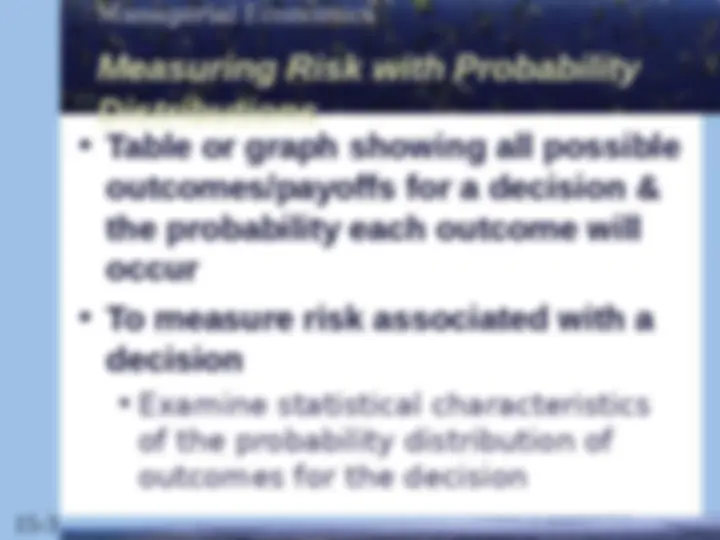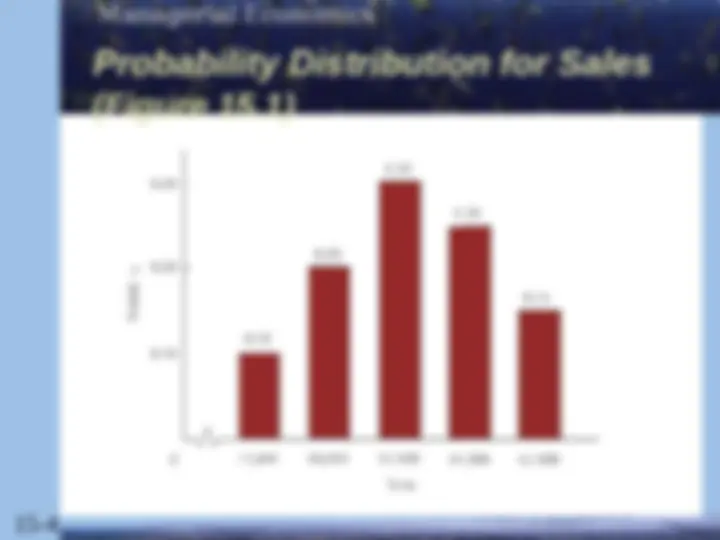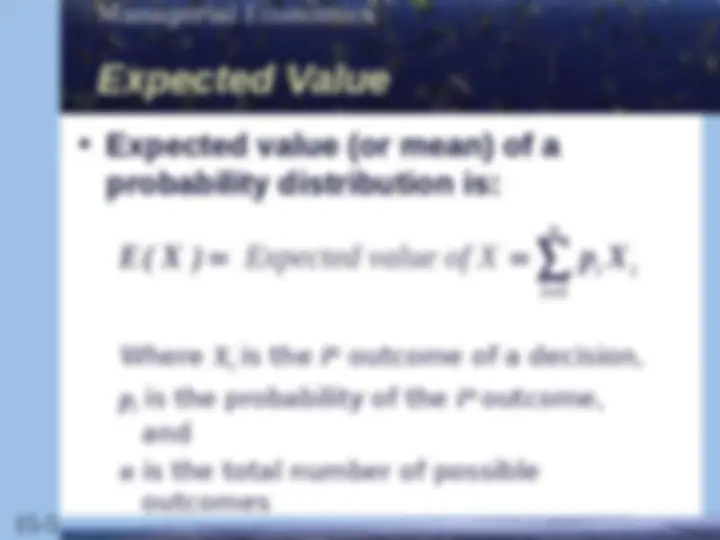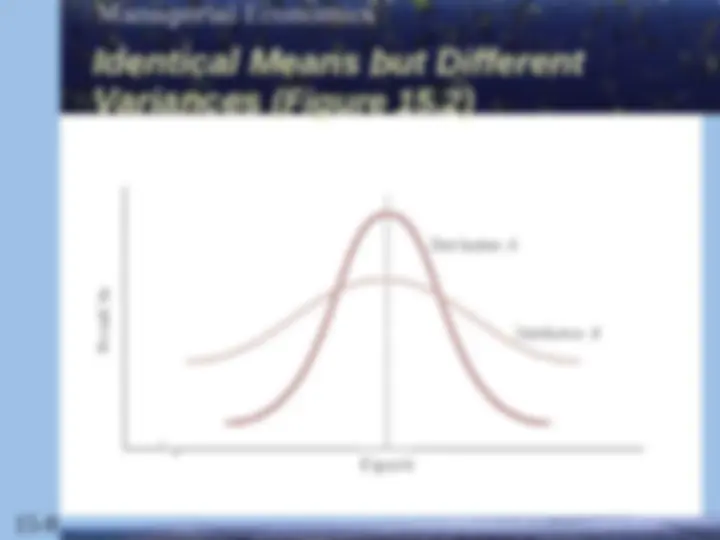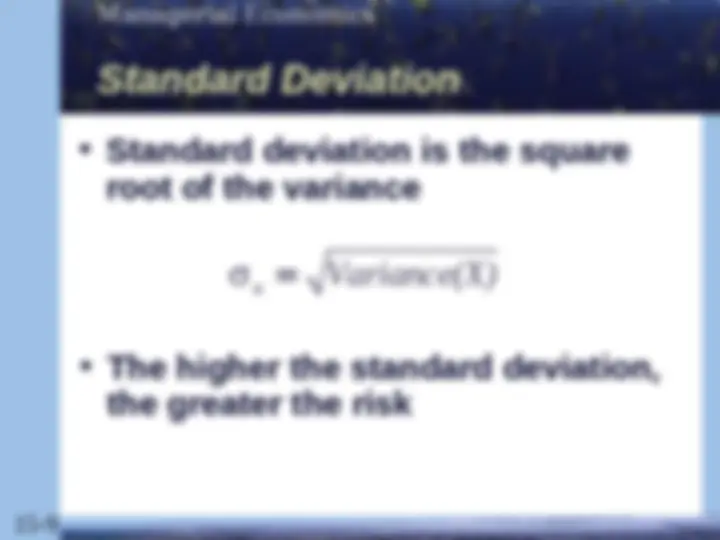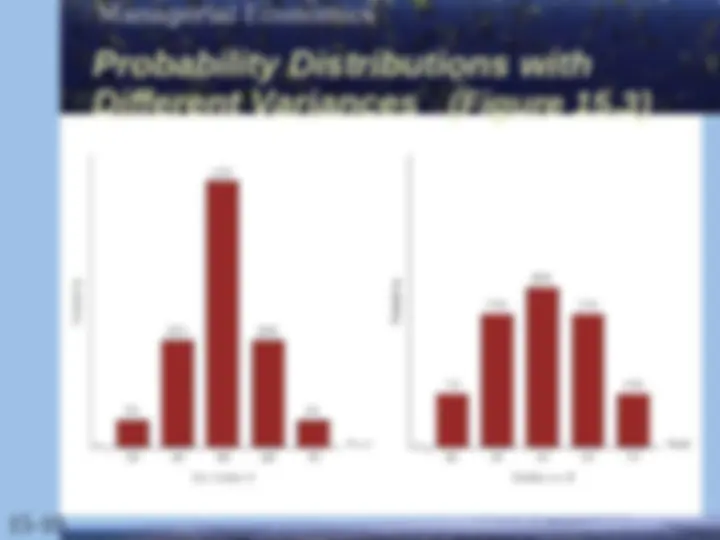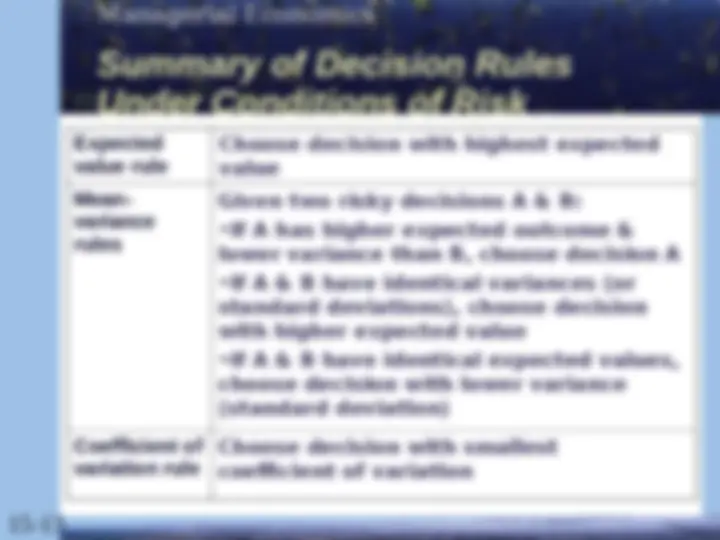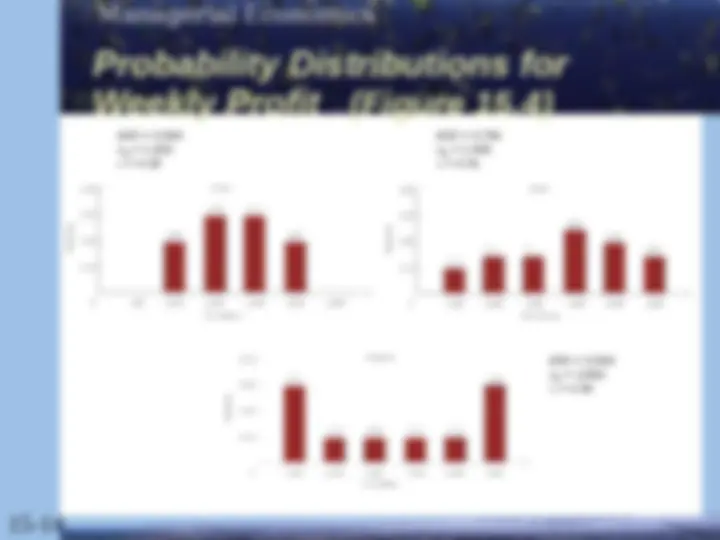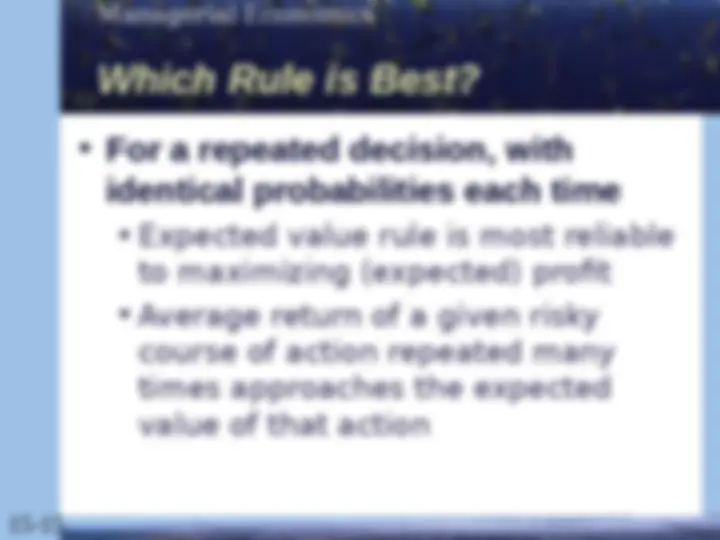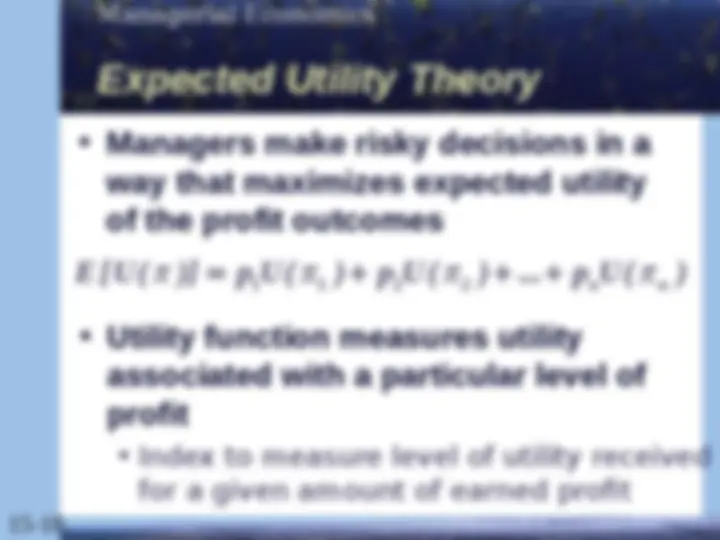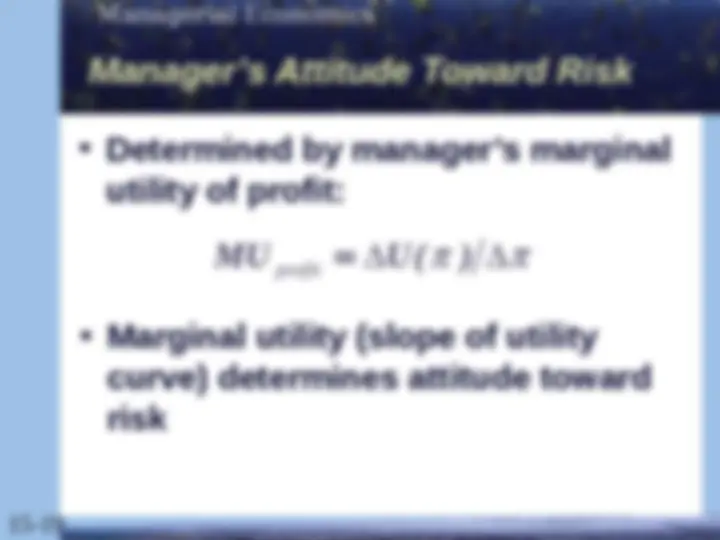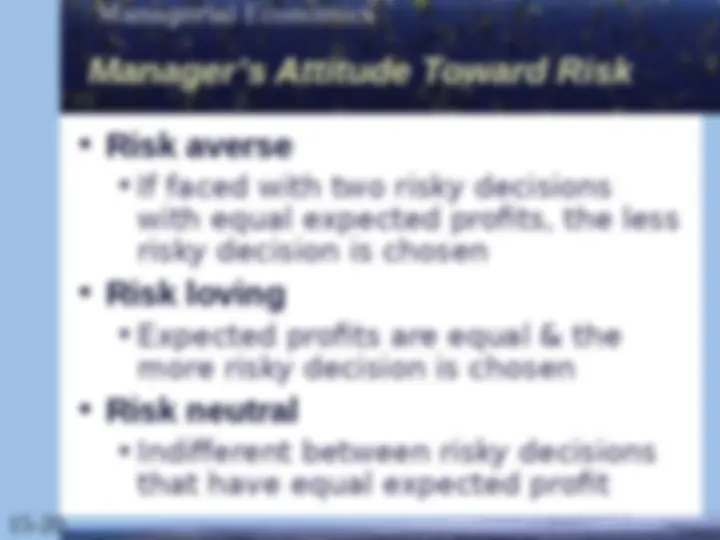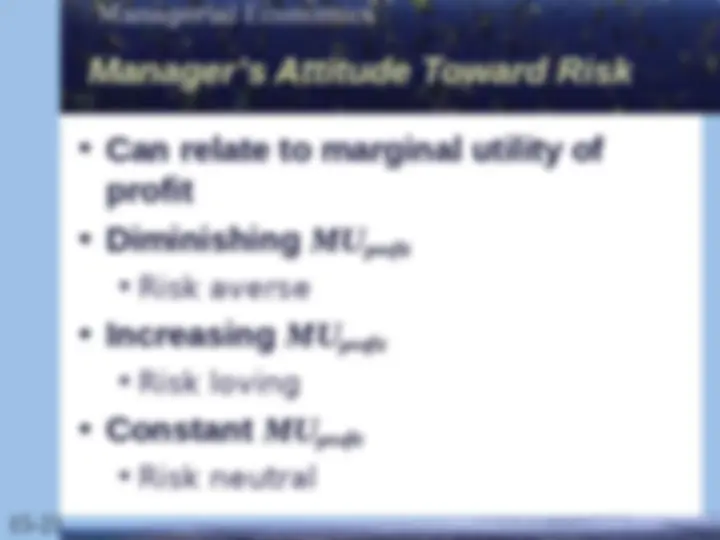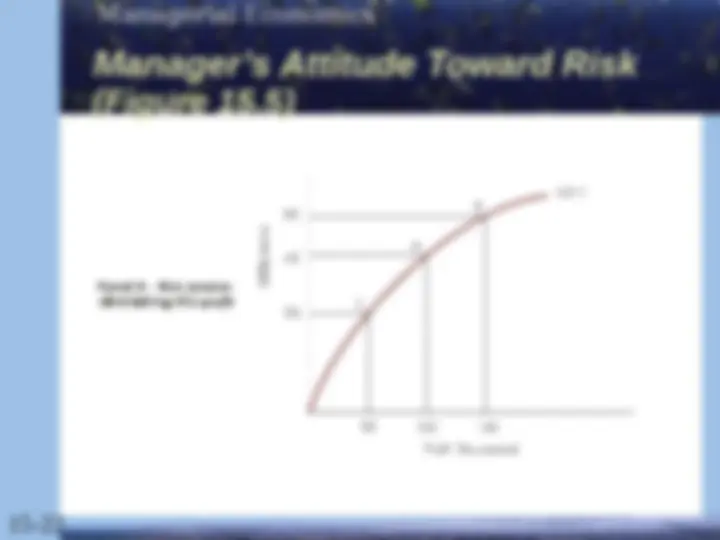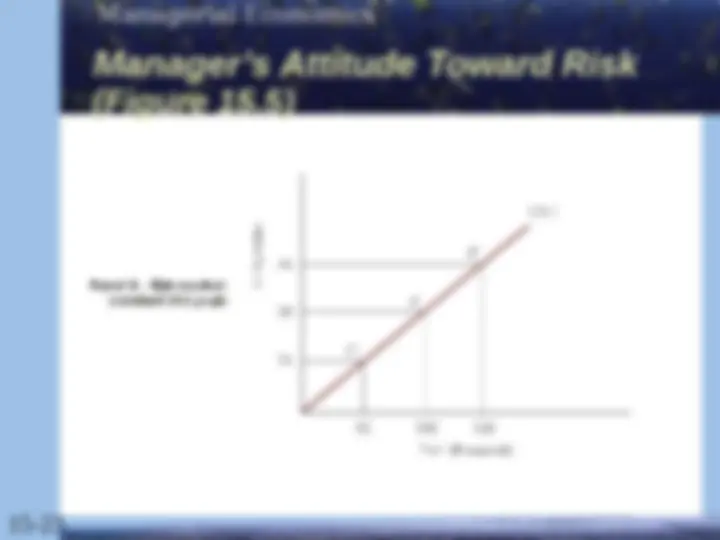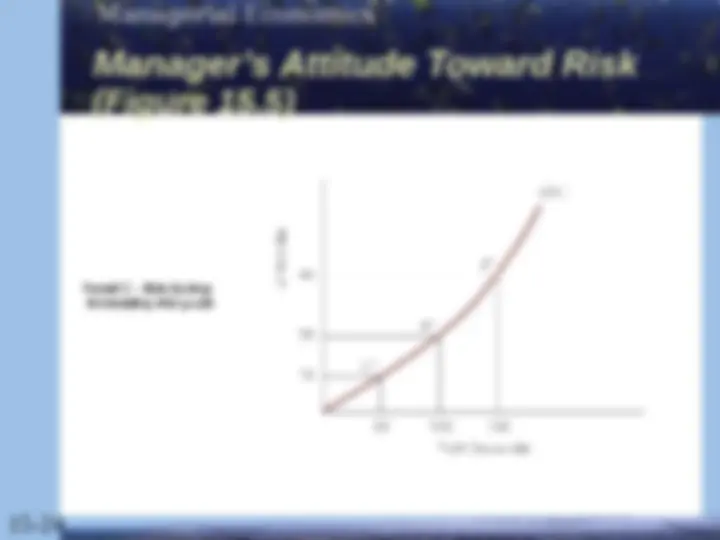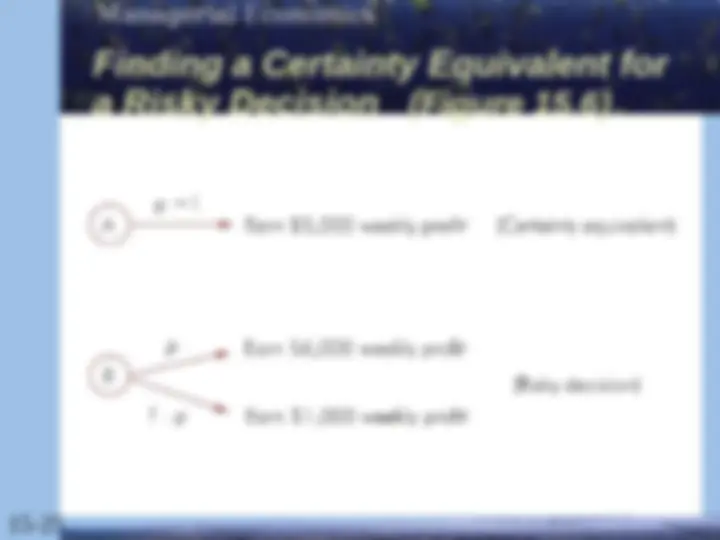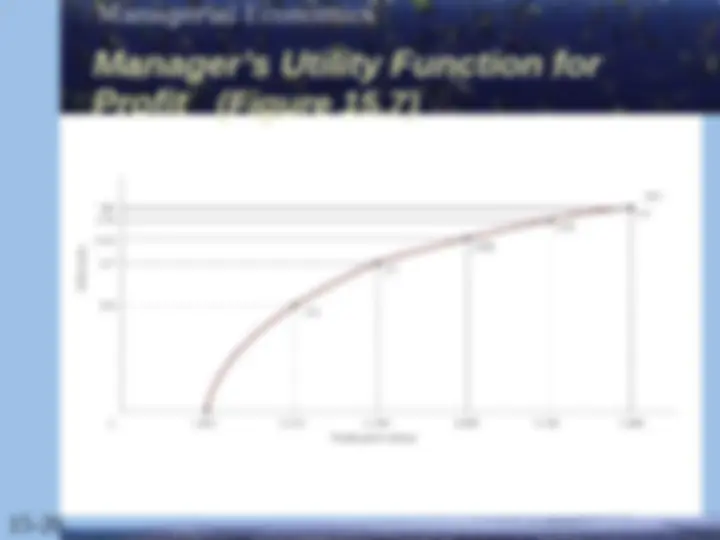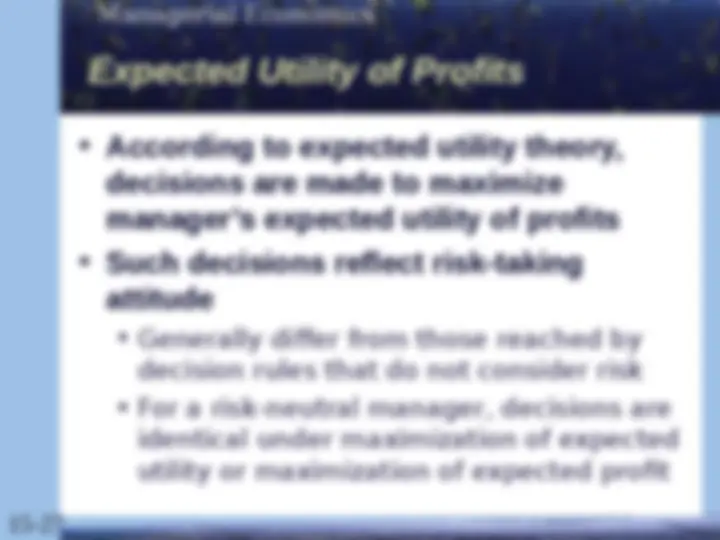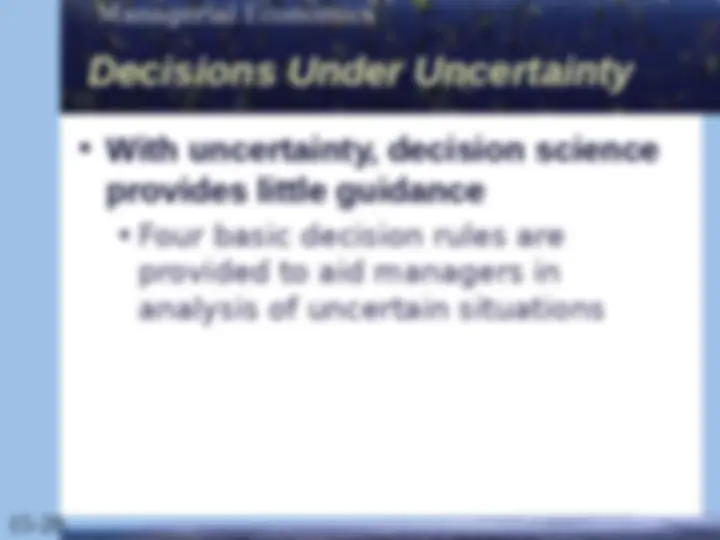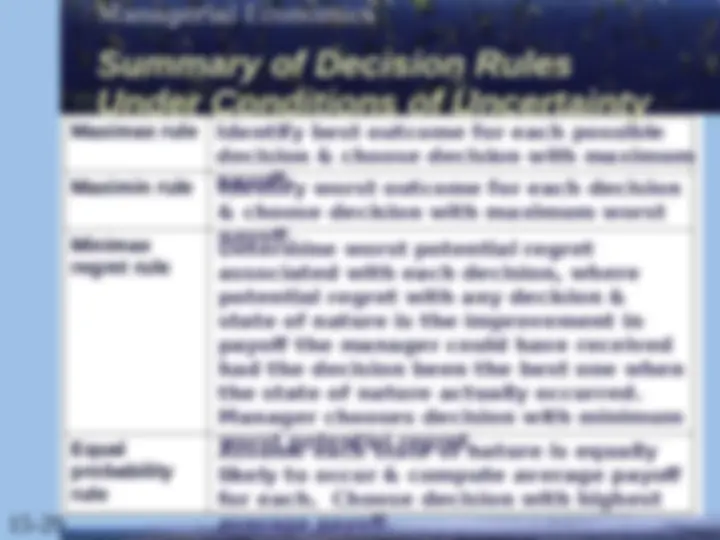Download Managerial economics risk and more Lecture notes Managerial Economics in PDF only on Docsity!
Copyright © 2008 by the McGraw-Hill Companies, Inc. All McGraw-Hill/Irwin Managerial Economics,
Managerial Economics
Thoma
ninth edition Mauric
Copyright © 2008 by the McGraw-Hill Companies, Inc. All McGraw-Hill/Irwin Managerial Economics,
Managerial Economics
Thoma
ninth edition Mauric
Chapter 15
Decisions Under Risk and
Uncertainty
Risk vs. Uncertainty
- (^) Risk
- (^) Must make a decision for which the
outcome is not known with certainty
- (^) Can list all possible outcomes &
assign probabilities to the outcomes
- (^) Uncertainty
- (^) Cannot list all possible outcomes
- (^) Cannot assign probabilities to the
outcomes
Probability Distribution for Sales
(Figure 15.1)
Expected Value
• Expected value (or mean) of a
probability distribution is:
Where X
i
is the i
th
outcome of a decision,
p
i
is the probability of the i
th
outcome,
and
n is the total number of possible
outcomes
n i i i
E( X ) p X
1
Expected value of X
Variance
- (^) Variance is a measure of absolute risk
- (^) Measures dispersion of the outcomes about the mean or expected outcome n x i i i p ( X E( X )) 2 2 1 Variance(X)
- (^) The higher the variance, the greater the risk associated with a probability distribution
Identical Means but Different
Variances (Figure 15.2)
Probability Distributions with
Different Variances (Figure 15.3)
Coefficient of Variation
- (^) When expected values of outcomes differ substantially, managers should measure riskiness of a decision relative to its expected value using the coefficient of variation - (^) A measure of relative risk E( X ) Standard deviation Expected value
Summary of Decision Rules
Under Conditions of Risk
Expected value rule Mean- variance rules Coefficient of variation rule Choose decision with highest expected value Given two risky decisions A & B:
- If A has higher expected outcome & lower variance than B, choose decision A
- If A & B have identical variances (or standard deviations), choose decision with higher expected value
- If A & B have identical expected values, choose decision with lower variance (standard deviation) Choose decision with smallest coefficient of variation
Probability Distributions for
- E(X) = 3, Weekly Profit (Figure 15.4)
- A = 1,
- = 0.
- E(X) = 3,
- B = 1,
- = 0.
- E(X) = 3,
- C = 2,
- = 0.
Which Rule is Best?
- (^) For a one-time decision under risk
- (^) No repetitions to “average out” a bad outcome
- (^) No best rule to follow
- (^) Rules should be used to help analyze & guide decision making process - (^) As much art as science
Expected Utility Theory
- (^) Actual decisions made depend on the willingness to accept risk
- (^) Expected utility theory allows for different attitudes toward risk- taking in decision making - (^) Managers are assumed to derive utility from earning profits
Manager’s Attitude Toward Risk
- (^) Determined by manager’s marginal utility of profit:
MU U ( )
profit
- (^) Marginal utility (slope of utility curve) determines attitude toward risk
Manager’s Attitude Toward Risk
- (^) Risk averse
- (^) If faced with two risky decisions with equal expected profits, the less risky decision is chosen
- (^) Risk loving
- (^) Expected profits are equal & the more risky decision is chosen
- (^) Risk neutral
- (^) Indifferent between risky decisions that have equal expected profit

